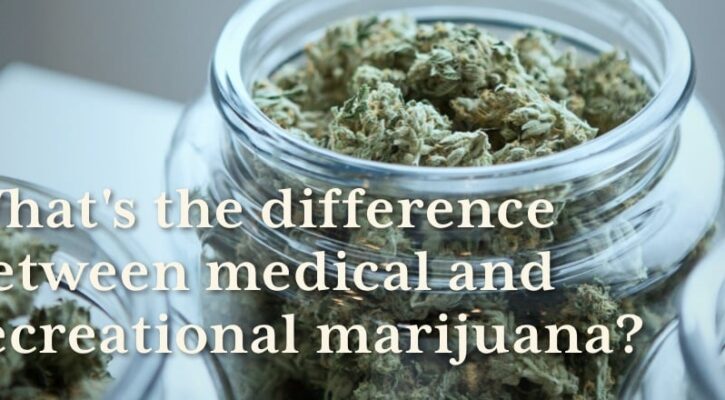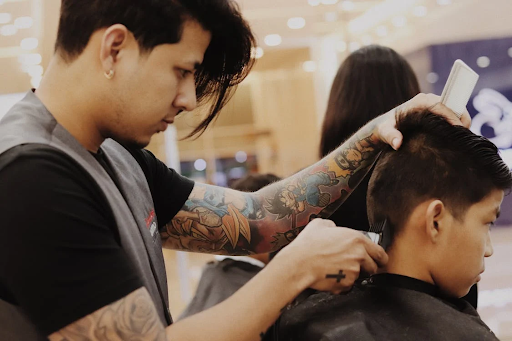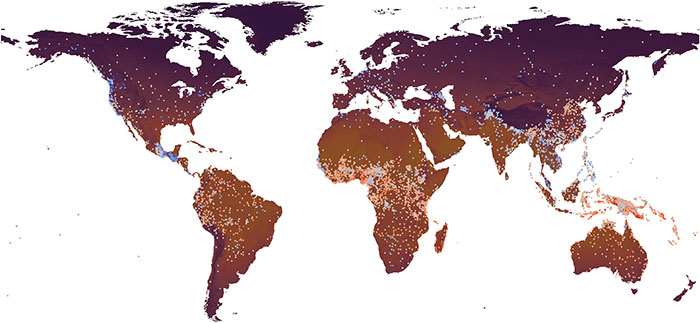Month: December 2023

What’s the difference between recreational marijuana and medical marijuana
December 22, 2023
The recreational use of marijuana and medical marijuana differ in various ways. Recreational marijuana refers to the use of cannabis for recreational purposes, such as recreational activity or pleasure-seeking. Conversely, medical marijuana is used for therapeutic reasons and to treat symptoms of certain health conditions. The main differences between recreational and medical marijuana are in the way it is regulated, the types of cannabis products available, and the chemical composition of those products.
In recreational marijuana, there are fewer restrictions on what types of cannabis can be purchased and consumed. The recreational marijuana market consists mainly of dried flower buds that contain a range of different cannabinoids. On the other hand, medical marijuana is heavily regulated in terms of which medical conditions it can be prescribed to treat and what types of cannabis can be used. Medical marijuana typically contains higher levels of cannabidiol (CBD) and lower levels of tetrahydrocannabinol (THC), the psychoactive compound that makes recreational users feel “high.”
The main difference between recreational and medical marijuana, then, lies in the levels of specific cannabinoids, as well as the medical conditions they are used to treat. Both recreational and medical marijuana can be bought from dispensaries, but recreational marijuana is only legal in certain states and countries. Medical marijuana, on the other hand, has been approved for medicinal use in many states and countries. Ultimately, recreational marijuana is intended for recreational use, while medical marijuana is intended to treat specific medical conditions. Both types of marijuana should only be used in accordance with local laws.
In order to purchase recreational or medical marijuana, you must typically possess a valid medical card or other form of proof that you are legally allowed to purchase it. As the legal landscape surrounding recreational and medical marijuana continues to evolve, it is important to stay up-to-date on local laws and regulations.
Recreational marijuana tends to have higher levels of THC (tetrahydrocannabinol), the psychoactive compound in marijuana responsible for producing a “high” sensation. Medical marijuana, on the other hand, typically has lower levels of THC and higher levels of CBD (cannabidiol), a non-psychoactive compound that is believed to have health benefits.
The recreational use of marijuana can also be more expensive than medical marijuana due to taxation and other regulations surrounding recreational sales. In some states, recreational purchasers may not receive the same discounts as medical marijuana patients. In addition, recreational marijuana may only be available to those over 21 years of age, while some states permit medical marijuana use for those under 21.
It’s important to note the differences between recreational and medical marijuana in order to stay compliant with local laws and regulations. Know what you’re purchasing and understand the potential medical implications of recreational marijuana use. If you are considering using recreational marijuana, speak to your healthcare provider to learn more about potential risks and benefits. This can help ensure that recreational marijuana is used in a safe and responsible manner.
Ultimately, recreational and medical marijuana have different purposes and should be treated differently when considering use. It’s important to understand that recreational marijuana use may not have the same medical benefits as medical marijuana and should be used in accordance with local laws. Be sure to always consult a healthcare provider before using recreational marijuana. With the proper knowledge, recreational and medical marijuana can both provide enjoyable experiences when used responsibly.

The Impact of Celebrity Barber Features in Fashion Magazines
December 20, 2023
A man’s haircut and beard style are significant factors in creating his identity. Guys want to feel confident about their looks and search for the best barbers to develop their personal style statement. Actors, hip-hop legends, and sports stars also want to deal with barbers who are full-fledged influencers. These prominent barbers are often featured in fashion magazines.
Fashion magazines draw the attention of a community that attracts professional barbers and style-conscious men. They provide information on the latest events in the salon industry. At the same time, celebrity barbers can discuss their views on barbering. These professionals believe they are the crafters of new hair and beard styles. They have the power to transform and manipulate others’ looks.
Celebrity Barbers Transforming The Salon Industry:
Like other industries, the fashion world is highly dynamic. It is not just about the new designs and styles of outfits or makeup products. Certified and reputed barbers in fashion magazines discuss different topics, such as skin and hair trends, dramatic looks, and grooming techniques. Their information and advice can bring transformation to the barbering industry. Even if you are an experienced barber, you should keep your knowledge updated by reading fashion magazines regularly. You will learn how successful and well-known barbers have recreated the look and style of their barbers.
Although you may find edited photos of some male models in fashion magazines, the information in the journals is highly important for your profession. If you are searching for full-time barber jobs in Denver, you should read fashion magazines daily.
Hair stylists, beard grooming specialists, hair-dying experts, and even makeup artists are featured in fashion magazines. These reputed professionals are aware of the preferences and needs of young guys who always want to upgrade their styles. So, celebrity barbers and salon professionals have a significant influence on the fashion world.
Barbers In The Magazines Set New Standards:
Eminent barbers in fashion magazines have the potential to set some standards. So, salon professionals who need to serve their clients regularly should meet those standards. As they want to please their clients with the best quality services, it is essential to go through the magazines. In fact, fashion magazines allow emerging barbers to connect with grooming artists and high-profile barbers.
Salons that have not met the desired standards of their services may not expand their businesses. Thus, trends and the latest information provided by famous barbers can make a difference in their businesses.
Conclusion:
Fashion-conscious men like to read fashion magazines to learn about the latest trends. However, these journals and magazines are not just sources of information about grooming trends. In the salon industry, barbers must stay knowledgeable and continue their learning. So, they can read these magazines to keep their knowledge up-to-date. They will be able to improve their processes and provide the best experience. Fashion magazines allow them to learn how celebrity barbers apply different techniques to create new trends. Although you can communicate with these barbers through social media, magazines are best for updating your knowledge.
Linguistics Study Reveals Link Between Loudness Of A Language And Region Temperature
December 7, 2023
We’ve all heard those stereotypes portraying people who speak Latin languages, whether that be Spanish, French, or Italian, as sounding more “passionate” or even “loud”.
As it turns out, the stereotype may stem from some truth, as a new study published on Thursday (December 5) suggested that temperatures influence the way we talk.
Dr. Søren Wichmann, a linguist at Kiel University in Germany, together with colleagues from China, demonstrated in the study that was published in the online journal PNAS Nexus that average ambient temperatures influenced the loudness of certain speech sounds.
Languages in warmer regions are louder than those in colder regions, a linguistics study found

Image credits: Tianheng Wang, Søren Wichmann
Søren explained: “Generally speaking, languages in warmer regions are louder than those in colder regions.”
To summarize the study, we are surrounded by air when we speak and listen; therefore, spoken words are transmitted through the air as sound waves, as per Phys Org. As a result, the physical properties of air influence how easy it is to produce and hear speech.
Søren explained: “On the one hand, the dryness of cold air poses a challenge to the production of voiced sounds, which require vibration of the vocal cords. On the other hand, warm air tends to limit unvoiced sounds by absorbing their high-frequency energy.”

Image credits: Qian Gu
These factors could reportedly favor a higher volume of certain speech sounds in warmer climates, known as sonority in scientific terms.
The Danish linguist and his colleagues reportedly used the Automated Similarity Judgment Program (ASJP) database to test whether these factors really had an effect on the development of languages.
We are surrounded by air when we speak and listen. Therefore, spoken words are transmitted through the air as sound waves

Image credits: Łukasz Maźnica
At the moment, the database is reported to contain the basic vocabulary of 5,293 languages and is constantly being expanded with the support of the ROOTS Cluster of Excellence, a German research institution in Kiel.
Subsequently, Søren and his team discovered that languages that occur around the Equator in particular have a high average sonority, whereas languages in Oceania and Africa have the highest corresponding index.
On the other hand, the world record for low sonority reportedly belongs to the Salish languages on the northwest coast of North America.

Image credits: Priscilla Du Preez 🇨🇦
Nevertheless, some exceptions have been found in this trend. For instance, some languages in Central America and on the Southeast Asian mainland have a rather low mean sonority, even though they are spoken in very warm regions.
Søren stated: “Overall, however, we were able to establish a clear relationship between the mean sonority of language families and the mean annual temperature.”
The physical properties of air influence how easy it is to produce and hear speech

Image credits: MART PRODUCTION
As a result, the exceptions indicate that the effects of temperature on sonority develop only slowly and only shape the sounds of a language over centuries or even millennia.
Scientists are reportedly in the midst of discussing the extent to which the environment shapes languages.

Image credits: Gabriel Foureaux
The linguistics expert revealed: “For a long time, research assumed that linguistic structures are self-contained and are not influenced in any way by the social or natural environment. More recent studies, including ours, are beginning to question this.”
Søren further informed that “If languages adapt to their environment in a slow process lasting thousands of years, then they carry some clues about the environment of their predecessor languages.”
